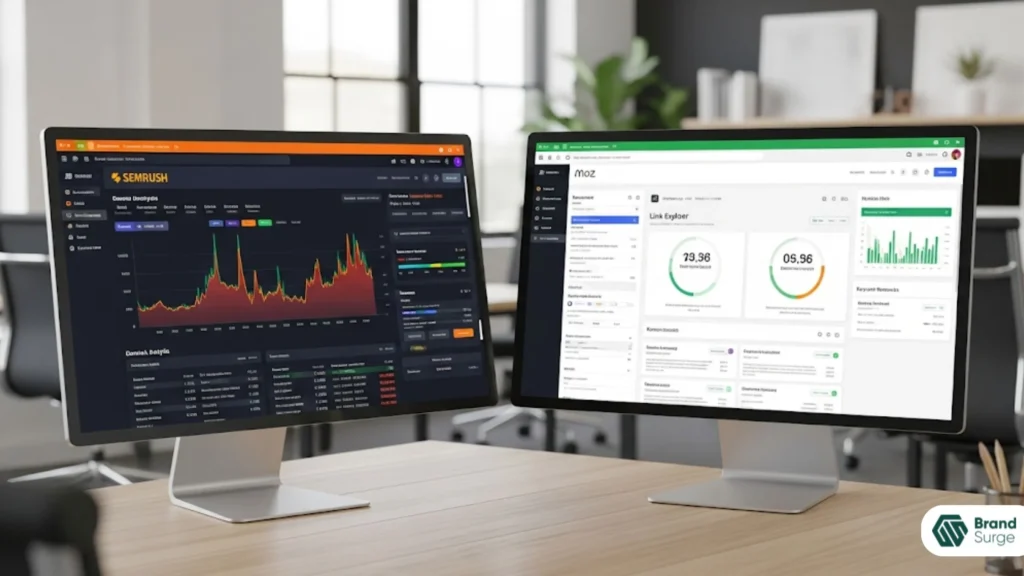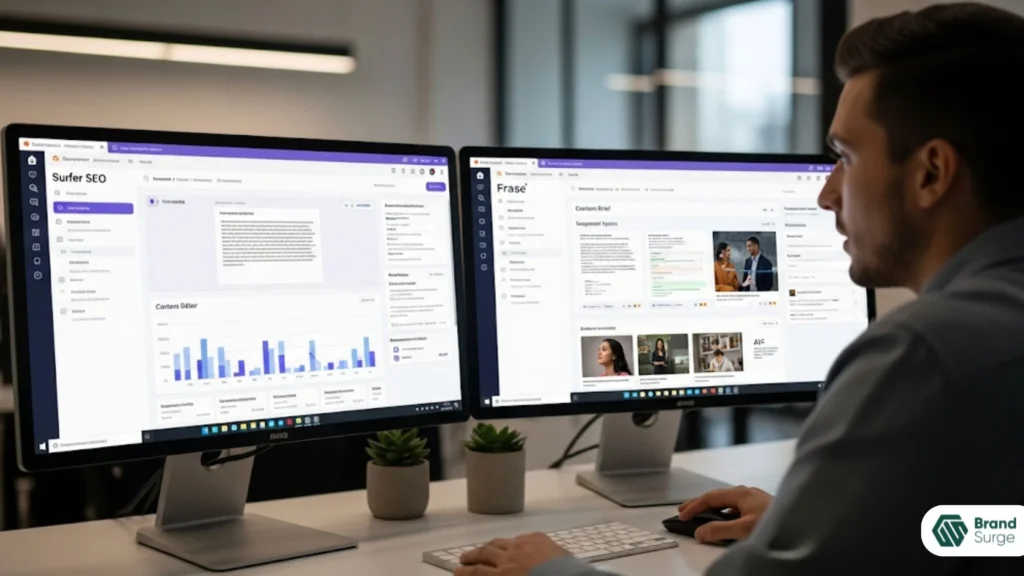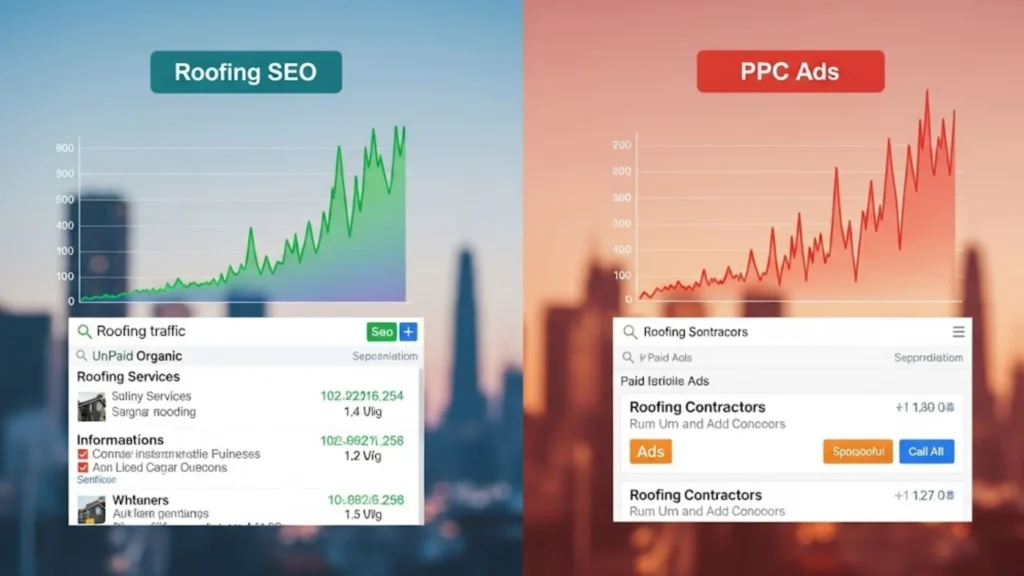Local search optimization demands more than generic keyword strategies. Businesses targeting city-, state-, or ZIP-level visibility need tools that deliver precise insights into local queries, Google Business Profile performance, and geo-targeted competitor analysis. Ahrefs vs Semrush is a debate shaping how brands choose their local SEO tech stack, weighing features like Map Rank Tracker against city-level rank tracking, Google My Business ranking tracker, and local SERP features analysis.
This in-depth comparison examines each platform’s local keyword research tool capabilities, audit and reporting features, small business SEO toolset, multi-location support, and pricing. By the end, decision-makers will understand which toolkit drives better local visibility and customer acquisition across neighborhoods.
Is Semrush Better Than Ahrefs for Local SEO?
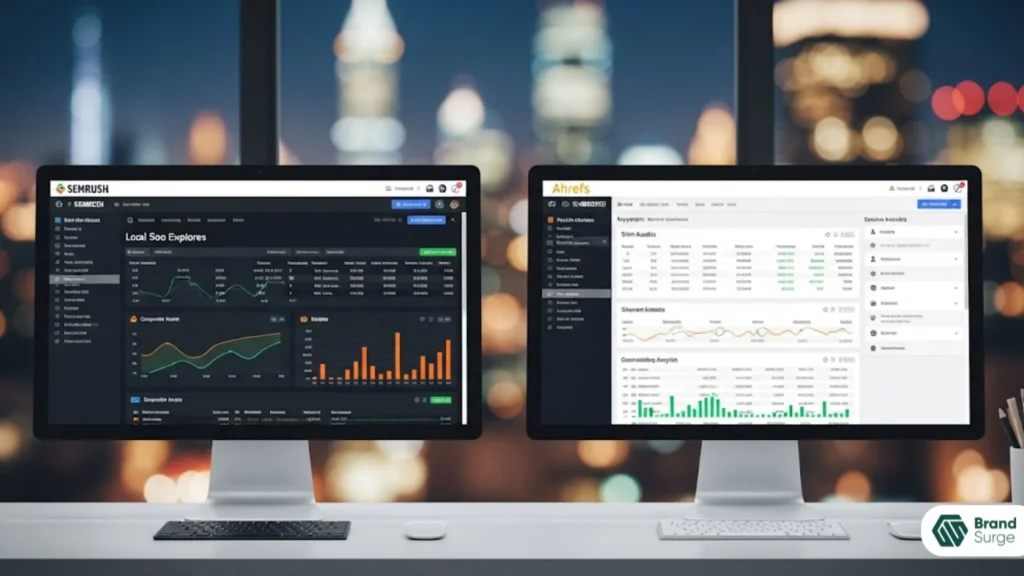
Ahrefs vs Semrush has become the industry’s go-to question when evaluating local SEO platforms. Both solutions deliver robust rank tracking, but Semrush’s Map Rank Tracker often edges out with its visual heatmaps and direct integration with Google Business Profile data.
While Ahrefs enables city and ZIP code segmentation for keyword positions, marketers find Semrush easier for monitoring local pack and Google Maps rankings alongside desktop and mobile results. That visual edge makes Semrush a favorite for agencies managing multiple storefronts or franchisees.
What Is Local SEO and Why Does It Matter?
Local SEO focuses on optimizing a business’s online presence to appear in geographically relevant searches. When users search for “coffee shop near me” or “plumber in Dallas,” search engines deliver results based on proximity and authoritative local signals.
For small businesses, local visibility drives foot traffic and leads. Geo-targeted keyword research, local keyword competition analysis, and citation management all feed into higher placement in local packs and map results. Consistent NAP (Name, Address, Phone) data, schema markup for location, and positive Google reviews further strengthen local authority.
Local SEO also impacts multi-location brands. Each store needs individualized tracking to identify underperforming areas and optimize neighborhood-specific content. In this context, local SEO audit features and rank tracking tools become mission-critical for growth.
Key Features of Ahrefs for Local SEO
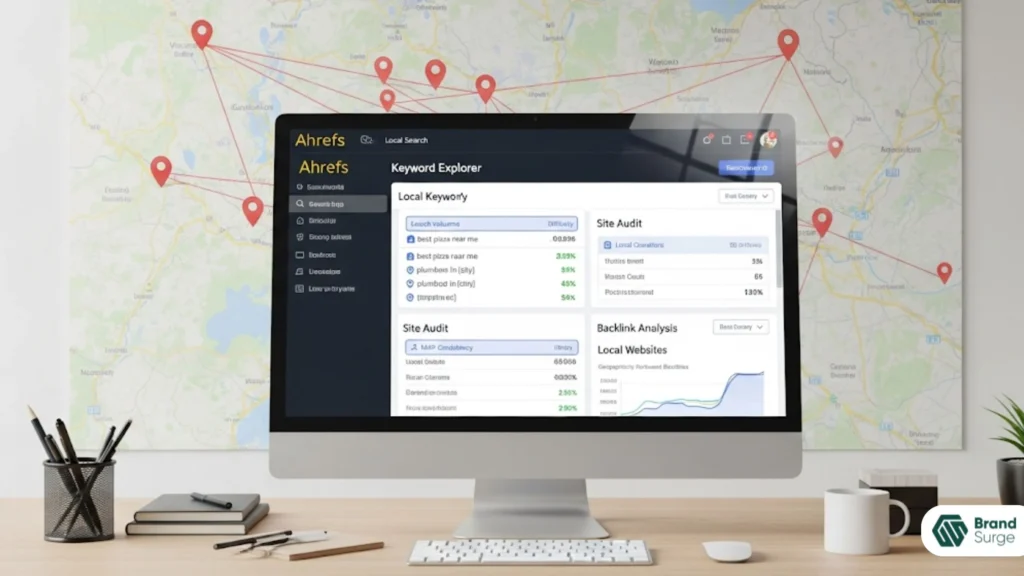
Ahrefs is renowned for its backlink intelligence and clean interface, but its local SEO toolkit deserves exploration too.
First, the Ahrefs Rank Tracker can segment keyword positions by country, city, region, and ZIP code. Marketers can configure tracking zones for up to 10,000 keywords, receiving updates on position changes across both desktop and mobile search.
Second, Ahrefs’ Keyword Explorer works for geo-targeted keyword research. Users can filter search volume by location, uncover local SERP features like featured snippets and local packs, and analyze click-through estimates. This level of insight supports content localization and hyper-relevant landing pages.
Finally, Ahrefs integrates seamlessly with Google Search Console, pulling impressions and clicks into local audit reports. This synthesis helps identify keywords that drive map pack interactions versus typical organic clicks. Ahrefs also surfaces competitor backlink profiles in the local context, revealing citation sources and local directories that boost domain authority.
How Semrush Elevates Local SEO Efforts
Semrush started as a broader marketing suite but has evolved into a powerhouse for local search optimization.
At the core is the Map Rank Tracker. This feature visualizes keyword performance on a heatmap overlaid on regions, down to ZIP code clarity. Brands can compare their Google Maps rankings against competitors in each neighborhood, pinpointing areas with high search volume but low visibility.
Semrush also boasts a dedicated Local SEO Toolkit. It includes Listing Management, which pushes accurate business data to over 70 directories (including Google My Business, Yelp, and Bing Places). That centralization ensures NAP consistency and helps earn visibility in local packs.
Position Tracking complements this by monitoring SERP features—local packs, knowledge panels, and featured snippets—across multiple locations. Automated reports, branded for stakeholders, keep franchise owners updated without manual checks.
Ahrefs vs Semrush: Local SEO Tools Comparison
| Feature | Ahrefs | Semrush |
| Local Rank Tracking | City, state, ZIP segmentation; mobile & desktop | ZIP code heatmaps; Map Rank Tracker; mobile & desktop |
| Local SERP Features Analysis | Tracks local packs, featured snippets, knowledge panels | Includes local pack, map pack, Q&A, knowledge panels |
| Google Business Profile Integration | Sync via Search Console insights | Direct GMB data import; Listing Management |
| Local Keyword Research | Geo filters in Keyword Explorer; click metrics | Keyword Magic Tool with geo-filters; PPC & organic data blend |
| Competitor Analysis | Backlink gap; keyword gap; top competitors per location | Competitive heatmaps; traffic analytics per location |
| Local SEO Audit Features | Site Audit with local checklist; schema markup detection | Site Audit with local issues; citation tracking; review monitoring |
| Multi-Location Support | Manual campaign setup per location | Bulk upload of locations; templated reports for multiple listings |
| Reporting & Automation | Scheduled email reports; data exports | Automated branded reports; API integrations; Slack notifications |
| Unique Advantage | Backlink intelligence; ease of use | Visual heatmaps; comprehensive local listings management; PPC synergy |
Leveraging Geo-Targeted Keyword Research
Effective local SEO begins with uncovering the exact queries users type in a specific region.
Ahrefs and Semrush both facilitate geo-targeted keyword research, but their approaches differ. With Ahrefs, users apply geo filters in Keyword Explorer to see search volumes and keyword difficulty for a particular city or postal code. The tool even estimates the number of clicks for each query, helping identify high-value terms like “emergency electrician Dallas” that can yield immediate business calls.
Semrush’s Keyword Magic Tool combines both SEO and PPC insights. By selecting a geographic filter, marketers see organic search volume alongside local cost-per-click data. This dual perspective informs whether to prioritize content creation or paid ads for specific queries. That blend is particularly valuable for small business owners exploring hybrid strategies.
Brands planning hyper-local content often leverage SEO Services to scale research across dozens of neighborhoods. A professional partner can extract targeted keyword lists, cluster them into content silos, and ensure on-page elements—like H1 tags and location schema—align with those search behaviors.
Local Rank Tracking and SERP Features
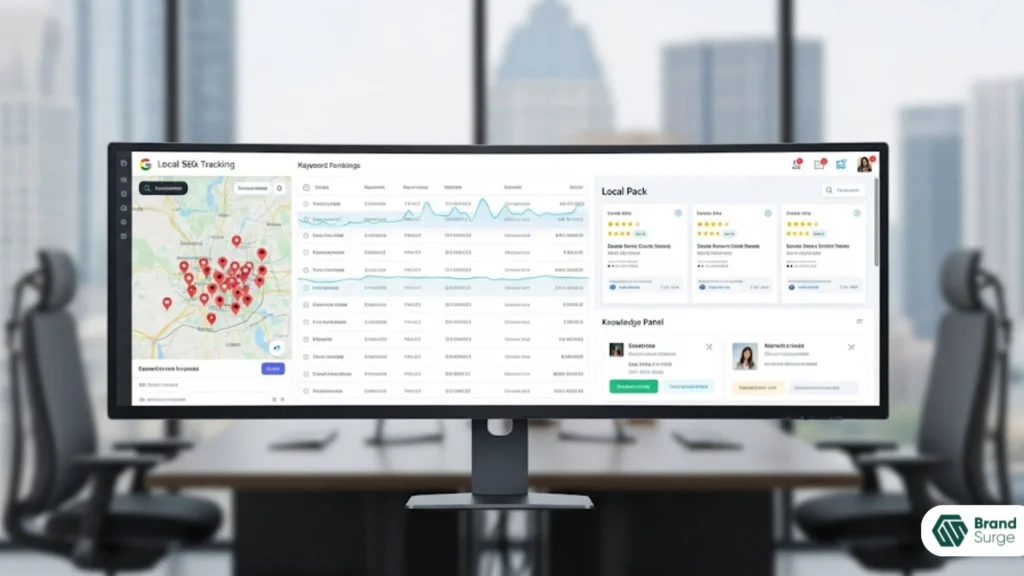
Tracking shifts in local rankings reveals how Google updates and competitor moves impact visibility in neighborhoods.
Ahrefs Rank Tracker lets users configure multiple campaign groups, each tied to a unique location. It automatically flags movements in local pack results, featured snippets, and knowledge panel entries. Notifications arrive by email, ensuring SEO managers catch sudden drops—perhaps due to a Google algorithm change or a negative GMB review.
Semrush’s Position Tracking goes further by enabling map pack tracking. Users can view a region’s high-density search zones via the heatmap, noticing at a glance where improvements are needed. The tool also captures SERP features such as Q&A boxes and local carousel results, delivering a comprehensive local search snapshot.
For businesses launching a new storefront, this level of detail is crucial. Monitoring fluctuations in the local pack reveals how new listings and review volume affect map rankings over weeks. Seasoned SEO teams often integrate these insights into weekly stand-ups alongside analytics dashboards.
Conducting a Local SEO Audit
A thorough local SEO audit examines technical, on-page, and off-page factors that influence visibility in a map pack and local organic results.
Ahrefs Site Audit includes audits for location schema, broken local citations, and page speed issues that disproportionately affect mobile users. The tool’s crawler flags missing or incorrect NAP data and alerts when duplicate landing pages are detected across location subdomains.
Semrush’s Site Audit module features a Local SEO checklist that identifies whether each page uses the correct schema.org markup for businesses, validates localized meta tags, and checks for review count sentiment analysis. It also monitors citation consistency across major directories and flags NAP discrepancies that undermine local trust.
Both platforms can export prioritized issue lists, but Semrush goes a step further by providing templated audit reports tailored for nontechnical stakeholders. This simplifies communication with franchise owners or local managers who may not understand technical jargon.
Small Business Local SEO Tools and Multi-Location Strategies
Small businesses and agencies managing multi-location brands need tools that automate repetitive tasks.
Ahrefs requires manual setup of each location’s rank tracking campaign, which can be time-consuming at scale. However, its API supports bulk keyword uploads and automated data pulls, ideal for custom dashboards.
Semrush offers a bulk upload feature in its Local SEO Toolkit. Agencies can upload a CSV of 100+ locations, and Semrush auto-configures listing management, citation audits, and ranking campaigns. This templated approach accelerates rollouts for national chains and regional franchises.
For businesses balancing organic and paid channels, integrating organic insights with PPC Services ensures cohesive strategies. While Ahrefs focuses on backlink and organic keyword analytics, Semrush’s hybrid data feeds inform both search engine optimization and local pay-per-click campaigns from a single interface.
Pricing and Value Considerations
Neither Ahrefs nor Semrush is inexpensive, but the right choice depends on feature requirements and scale.
Ahrefs’ pricing tiers start at $99 per month for Lite plans (suitable for small businesses focusing on up to 500 tracked keywords) and scale up to $999 per month for Enterprise packages with API access and white-label reporting. The credit-based system for extra reports can feel restrictive for agencies running frequent location audits.
Semrush begins at $119.95 per month, offering greater API limits and a generous allotment of tracking positions. The Pro plan supports up to 5,000 local rank checks, while the Business plan—at $449.95—unlocks unlimited listing management and bulk location uploads. Semrush also offers local SEO as an add-on module, allowing brands to purchase only the features they need.
When evaluating costs, brands should calculate time savings from automated reports, bulk location management, and seamless listing synchronization. In turn, those efficiencies can offset subscription fees within weeks for high-volume local campaigns.
How to Choose the Right Tool for Local SEO
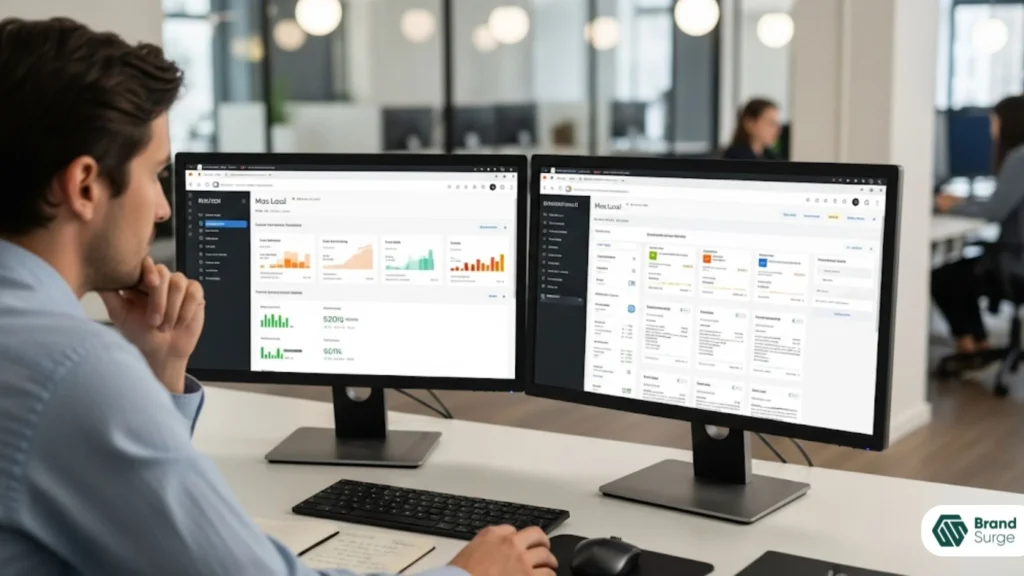
Selecting between Ahrefs vs Semrush hinges on three core criteria: visualization needs, listing management, and multi-location automation.
If a small business or agency prioritizes backlink intelligence and deep competitor analysis for single-location campaigns, Ahrefs delivers best-in-class domain and content gap insights. Its straightforward interface and integration with Google Search Console also simplify workflows for solo practitioners.
By contrast, Semrush excels for multi-location brands that require map heatmaps, automated listing management, and holistic SERP feature tracking. Its Local SEO Toolkit streamlines citation consistency and review monitoring, essential for franchises and regional chains.
Regardless of the choice, it’s wise to leverage trial periods and set up pilot campaigns in each tool. Observing real-world rank movements, audit details, and report clarity provides decisive feedback. Either path supports strong local visibility when paired with diligent on-page optimization, schema markup, and review acquisition strategies.
FAQs
Are Ahrefs and Semrush good SEO tools for local search?
Both Ahrefs and Semrush rank among the top SEO platforms, offering features designed for local search optimization. Ahrefs provides city-level rank tracking and backlink analysis, while Semrush adds listing management and map heatmaps, making each suitable depending on scale and feature priorities.
Is Semrush better than Ahrefs for local SEO?
Semrush often edges out Ahrefs when local listing management and visual regional insights are priorities. Its Map Rank Tracker and bulk location support simplify multi-store campaigns, whereas Ahrefs shines in backlink intelligence and detailed organic keyword research.
Does Ahrefs have a local SEO tool?
Ahrefs doesn’t have a standalone local SEO module. Instead, it leverages its Rank Tracker, Keyword Explorer, and Site Audit tools for geo-targeted keyword research, city-level position monitoring, and schema checks—covering most local SEO tasks within its existing toolkit.
Does Semrush have a local SEO toolkit?
Semrush includes a dedicated Local SEO Toolkit featuring Listing Management, Position Tracking with map heatmaps, and localized audit templates. This bundle centralizes NAP consistency, review monitoring, and multi-location reporting, streamlining local campaigns.
What is the key difference between Ahrefs local rank tracking and Semrush local rank tracking?
Ahrefs’ local rank tracking segments keyword positions by city, state, and ZIP code with straightforward ranking tables. Semrush enhances that with interactive heatmaps, direct Google Business Profile data imports, and templated competitor comparisons across multiple locations.
Final Words
In the Ahrefs vs Semrush showdown, both platforms support robust local SEO strategies, but the choice depends on specific needs: granular backlink and keyword insights versus automated location management and visual mapping. Brands weighing city-level segmentation, SERP feature analysis, and multi-location scale will find Semrush’s Local SEO Toolkit often justifies its investment. Meanwhile, organizations prioritizing backlink intelligence and deep competitor research may lean toward Ahrefs for its clarity and integration ease.
For tailored local optimization plans, businesses can engage professional Contact us resources to assess needs, run pilot campaigns, and establish a performance roadmap. Whether refining on-page schema markup or orchestrating geo-targeted content clusters, the right tool combined with strategic execution drives sustained local search success.
In conclusion, as local search becomes ever more competitive, choosing between Ahrefs vs Semrush shapes how effectively brands capture neighborhood-level audience intent. When implementation demands both strategic oversight and tactical precision, organizations turn to Brand Surge LLC for comprehensive audits, ongoing ranking support, and seamless integration with broader marketing funnels. Trust a partner that understands the nuances of local visibility, and transform searchers into customers in every ZIP code.
